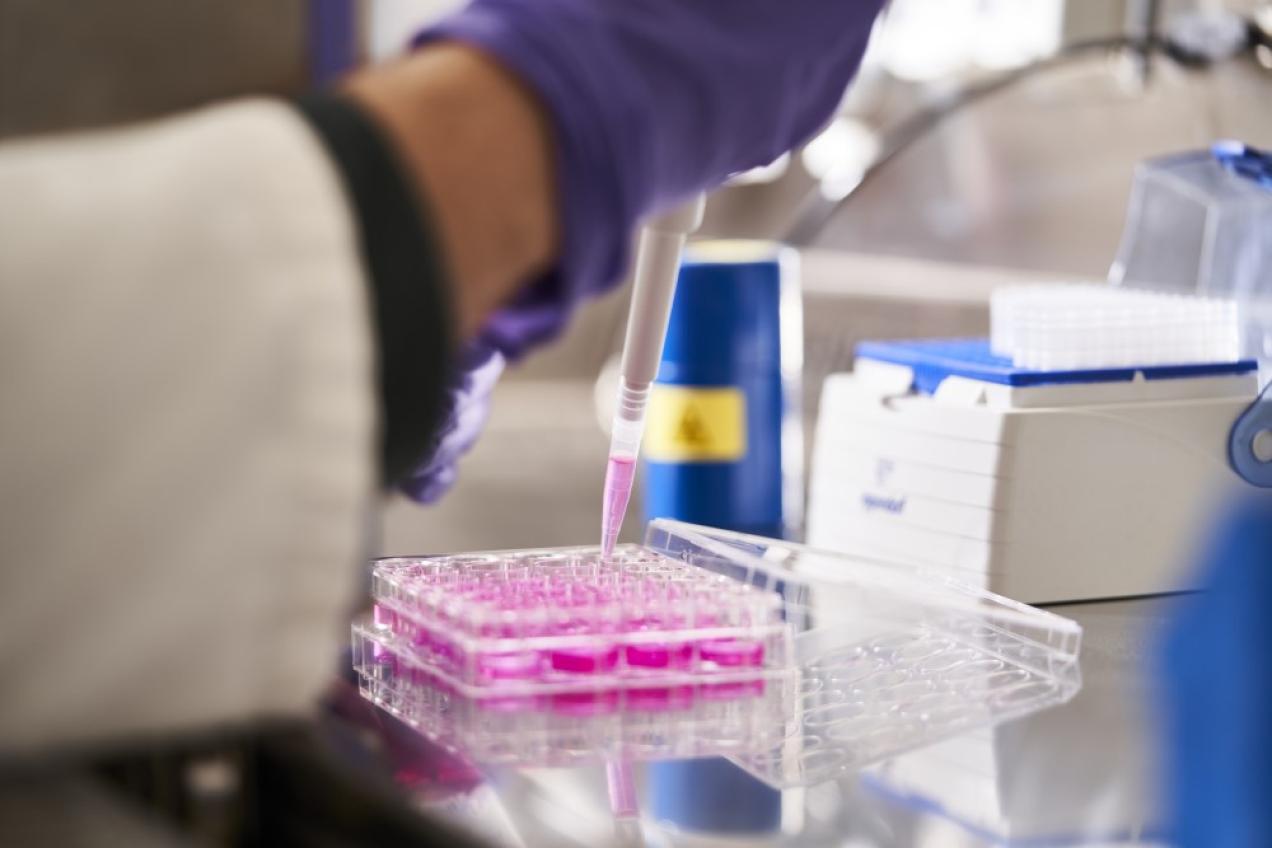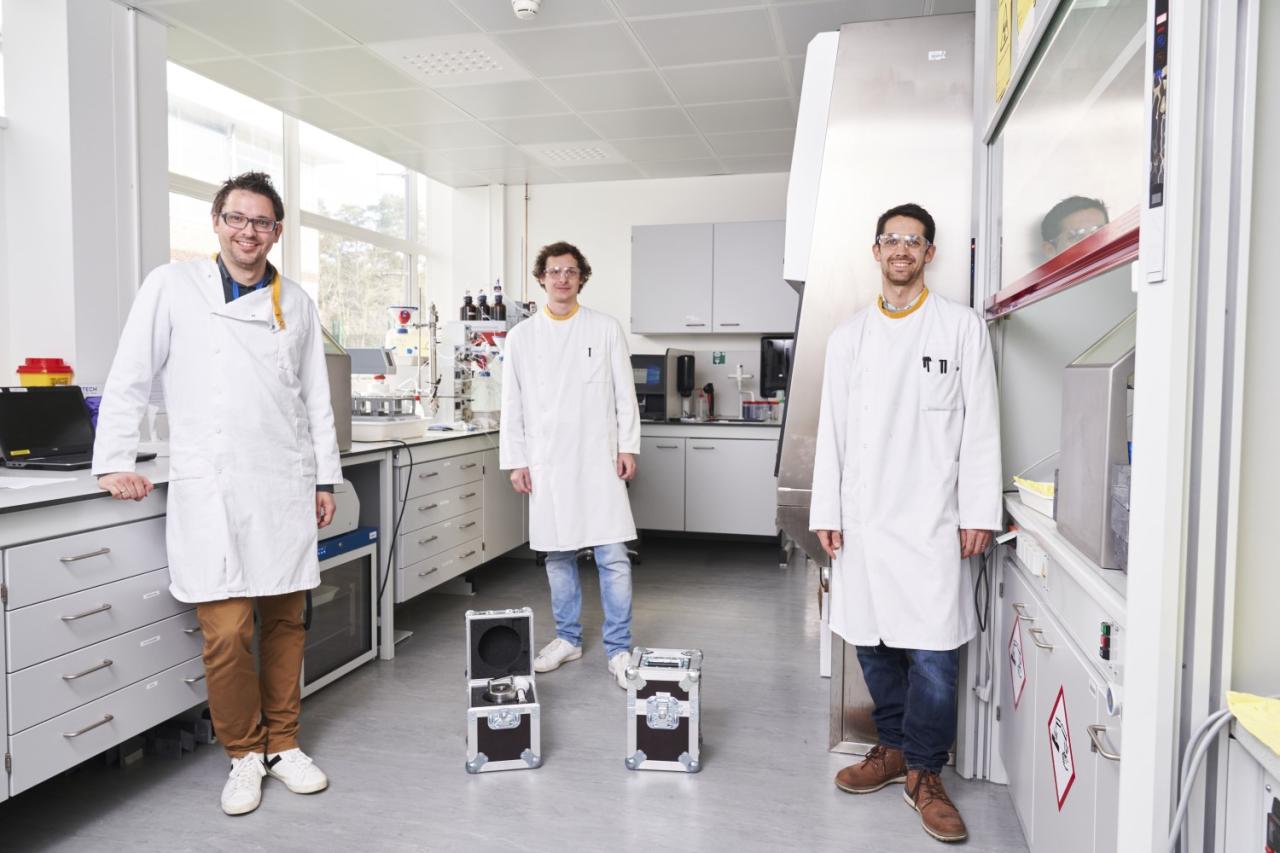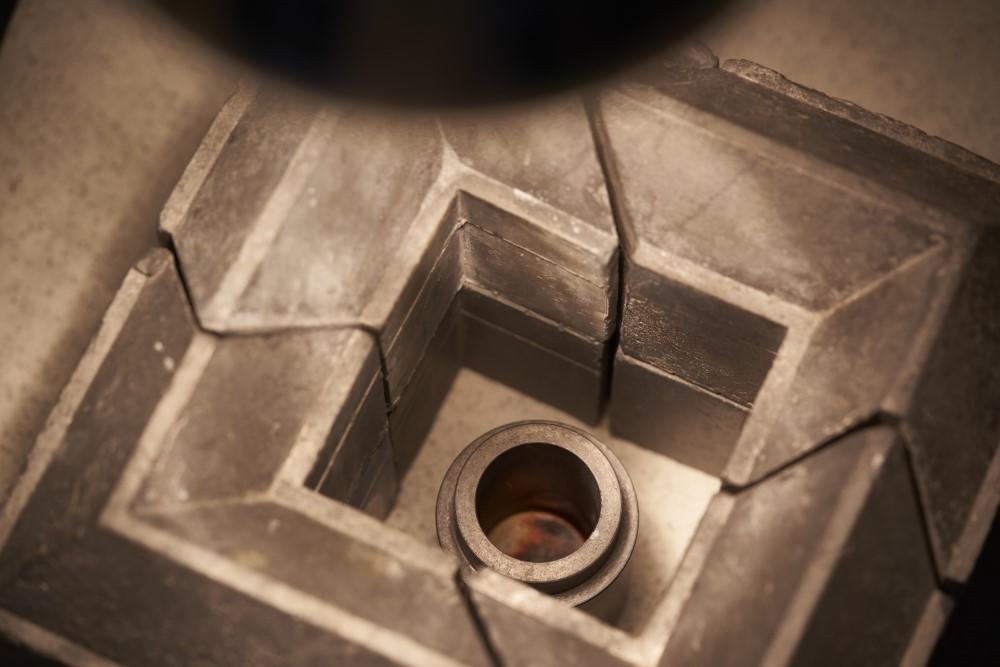From pain relief to cancer treatment
SCK CEN conducts research on samarium-153 as a theranostic radioisotope

For more than 20 years, the nuclear research centre SCK CEN has been producing samarium-153, a radioisotope that is often used in palliative care. Last year, SCK CEN radiochemists developed a technique to further purify the radioisotope. "Thanks to this technique, we can treat cancer instead of just alleviating its symptoms," says radiochemist Michiel Van de Voorde. The first preclinical tests have already been completed.

Some cancers such as breast, prostate and lung cancer spread to the bones, and these metastases can cause severe pain. To reduce this pain (temporarily), patients are often given treatment with samarium-153. This radioisotope, which behaves like calcium in the body, is largely absorbed into the skeleton. It irradiates very locally in the places where the bone is affected. Palliative treatment is usually non-curative, and only relieves pain.
The nuclear research centre SCK CEN – in cooperation with CERN in Geneva, Switzerland, and the Institute for Nuclear and Radiation Physics of KU Leuven – is working to change this. "The samarium that is currently used in palliative cancer therapy is, in fact, a mixture of non-radioactive samarium-152 and radioactive samarium-153. Until now, it has been impossible to separate these two radioisotopes. The consequence of this is that an excess of samarium-152 blocks the uptake of samarium-153 in a cancer cell, which inhibits its therapeutic power," explains Michiel Van de Voorde, radiochemist at SCK CEN.

SCK CEN has developed a separation technique to obtain pure samarium-153. "Thanks to this technique, we can treat cancer instead of just alleviating its symptoms," says Michiel. So what does the new production process look like? What additional steps are taken to obtain pure samarium-153? To obtain radioactive samarium-153, capsules of highly enriched samarium-152 are first irradiated in the BR2 research reactor. After irradiation, the capsules are taken to a radiochemistry laboratory on our site in Mol. "That's where we prepare the irradiated material to be transported to CERN-MEDICIS. There, samarium with an atomic mass of 153 is isolated and collected by means of mass separation in an ISOL facility. Once back in Mol, we continue to purify the captured samarium-153 through a radiochemical process, so that we can study its therapeutic effect further," explains radiochemist Andrew Burgoyne.

Staggered doses
Theoretically, further research is already worth the effort. "The radioisotope has a half-life of barely two days. Thanks to this short half-life, doctors are able to divide the dose into fractions and therefore administer several injections. This way, the patient is burdened with fewer high doses per treatment," says Maarten Ooms, radiopharmacist at SCK CEN. Another great advantage lies in the decay of the radioisotope. "Samarium-153 decays by emitting a beta particle. It also emits photons, which are packages of radiant energy that allow the body to be photographed internally, as it were. This makes samarium-153 the perfect theranostic radioisotope. It allows us to treat cancer while closely monitoring the effect of that treatment."
while closely monitoring the effect of that treatment.
Before that happens, though, it needs to be tested in practice. The first preclinical tests have already been completed. "We bound samarium-153 to a carrier molecule, tested the stability of that bond, and followed the path it takes in the body. Does the carrier molecule take the radioisotope to the target organs? It certainly did," continues Maarten. In a next step, the researchers will conduct experiments with cancer models and test medical imaging using samarium-153. SCK CEN then intends to scale up production as part of the NURA project in order to enable further research into this promising radioisotope. This project carries out game-changing research into radiopharmaceuticals for treating different types of cancer in collaboration with clinical and industrial partners.
Mass separator
At present, CERN-MEDICIS takes care of the physical selection based on mass, but in the future, the research infrastructure ISOL@MYRRHA will take on this role. "It's a race against time to get the medical radioisotopes to the patient in time. Every minute counts. So every time we don't have to change location, we save time for the benefit of the patient. And that's not all. By taking care of all the steps internally, we can guarantee the excellent quality of the development process," concludes Maarten. The construction of ISOL@MYRRHA is increasingly taking shape.
What are targeted treatments?
Targeted cancer treatment involves the very precise delivery of a therapeutic radioisotope to cancer cells using a carrier molecule. Once the carrier molecule is bound to or absorbed into the cell, the radioisotope can irradiate the cancer cells without affecting healthy tissue. The cancer cells are damaged, causing them to die off and the tumour itself eventually shrinks.
SCK CEN grows miniature brains.
Miniature brains may lead to increased understanding of the effects of radiation.